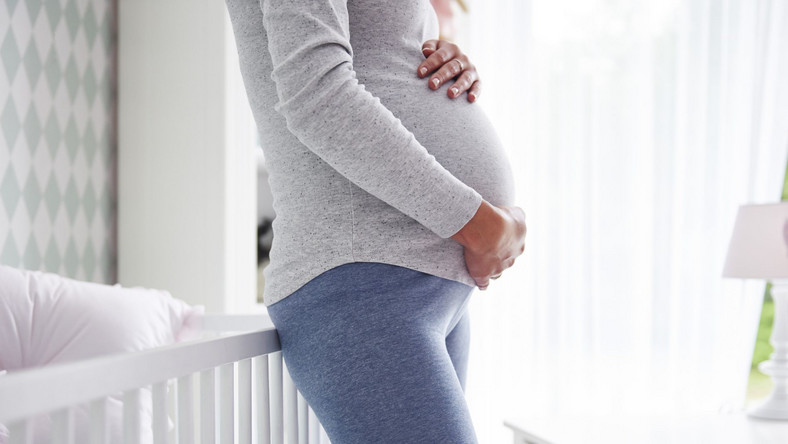After a C-section, your body can take up to 12 weeks to fully recuperate (this is a bit different from the 6 to 8 weeks in standard deliveries), says Cristina Muoz, MD, an associate professor in general obstetrics and gynecology at the University of North Carolina. A C-section is a major surgery, after all. In that time, your stitches will heal, your uterus will return to its regular size, and your body will release any extra fluid retained during pregnancy, she says. So yeah, it’s important to give it time.
Still, it can be uncomfortable (and annoying) waiting for your body to get back to its baseline. Here are a few things you can do to lose some extra baby weight in a healthy way.
1. First and foremost, be patient.
Again with the “snap back” thing-C-section recovery takes time. According to, Dr. Muoz, total recovery will take about six to eight weeks and, until then, you shouldn’t overdo it. So, prioritize your health, eat smart meals, and hydrate.
The most important thing to remember is that you cannot spot reduce and target only your midsection when it comes to weight loss-C-section or not. Youll need to focus on your entire body, which will take time but is totally possible.
2. Breastfeed-but don’t restrict your calories.
Typically, moms will notice that if they are fueling their body properly with a generally healthy diet and enough calories, some of the weight gained during pregnancy will naturally come off without any restrictions, says Elizabeth Hurley , RD. That’s thanks, in large part, to breastfeeding, which can burn about 300 to 500 calories per day, producing and releasing milk to nourish your baby.
But here’s the thing: While it might sound like a good idea to restrict calories during this time to create an even greater calorie deficit, it’s not. You need about 2,500 calories per day while breastfeeding, according to the American College of Obstetricians and Gynecologists (ACOG). Anything less could affect your milk supply, and in turn, affect your baby. Instead of cutting calories, focus on whole foods as part of healthy meals and the weight will start to come off on its own, says Hurley.
3. Dont cut anything out and eat smart.
This is not a time to deprive yourself and restrict foods unnecessarily, so try to consider ways to add nutrition into your day, rather than removing nutrition,” says Alyssa Lavy, RD. That means focusing on nutrient-dense foods, like fruits, vegetables, and whole grains-and skipping any fad diets.
Plus, by adding more nutrient-dense foods to your diet, youll end up snacking less on things that are full of calories but lacking in nutrients, have fewer cravings, and manage your blood sugar levels-all important things for any weight-loss goals.
4. Try your best to get enough sleep.
You probably just rolled your heavy, tired eyes reading this, but sleep makes a difference. Lack of sleep will not only affect breast-milk production, but your metabolism, food choices, and hunger pangs, according to Hurley.
If youre not sleeping enough, youll be tempted to reach for unhealthy and low-nutrient snacks for a quick boost of energy, especially since cooking takes time and energy-two things new moms don’t have a lot of.
5. Don’t forget to drink enough water.
Hydration is critical to your milk production, but also to resisting cravings. Sometimes cravings are really signs that you need to drink because youre getting dehydrated, says Sonya Angelone, RD. Postpartum bodies require much more fluid-a few extra glasses per day-than others since so much of it goes to the baby. And while youre at it, avoid higher calorie beverages like juices that often have a lot of calories and little fiber, she recommends.
6. Stay away from post pregnancy belts and girdles.
Its important to do everything you can to allow your core muscles to work on their own, which means skipping any post-pregnancy belts or girdles, says Kat Ellis, a certified personal trainer who specializes in pre- and postnatal exercise.
You want your core muscles to heal and strengthen through exercise-post-pregnancy belts or corsets will only weaken them more, since your core will end up relying on something else to keep them in place.
7. Focus on stability exercises.
Moves like squats or planks-a.k.a. exercises that focus more on stability than rotation or extension-allow new moms whove had C-sections to rebuild and strengthen their cores and pelvic floors, says Ellis. Even though you didnt deliver your baby vaginally, your pelvic floor will have still experienced trauma. Focus on exercises that bring your entire body, not just your stomach, to the healthiest state.
These moves are also ideal for diastasis recti-when your abdominal muscles separate during pregnancy-since they strengthen the muscles and tissue in the midsection without too much movement.
8. Keep your core protected at all times.
While diastasis recti can be a pain when it comes to the stomach “pooch,” it can also lead to other health issues down the road, like back pain, urinary stress incontinence, and pelvic floor dysfunction, says Leah Keller, a certified personal trainer and founder of Every Mother .
That means being mindful about your core, even when you’re not exercising (keep a neutral spine and your shoulders relaxed). Eliminate crunches from your workout routine, along with any moves that make you push your abs forward (keep your hand on your stomach when working your core and watch yourself in the mirror).
